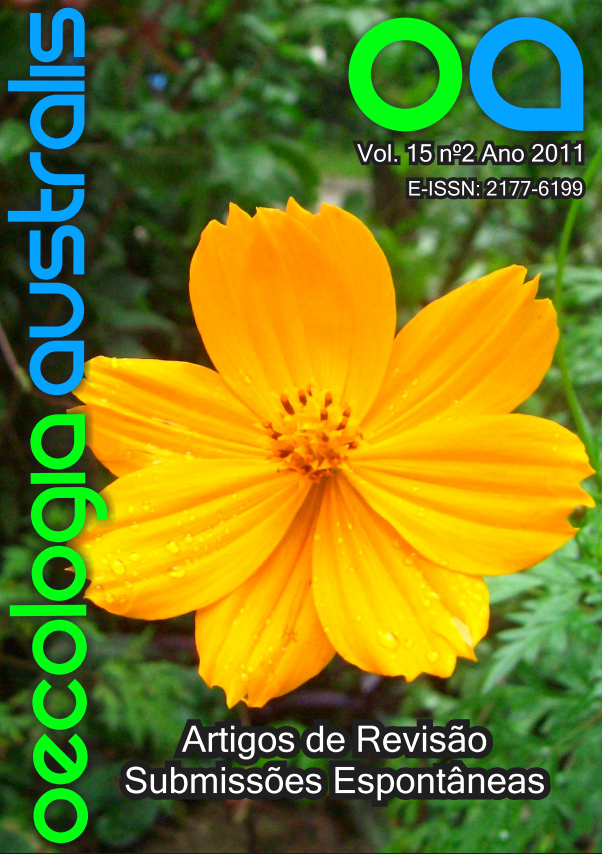UMA REVISÃO DOS EFEITOS DO FOGO SOBRE A FAUNA DE FORMAÇÕES SAVÂNICAS DO BRASIL
Keywords:
Biodiversidade, Cerrado, distúrbio por fogo, disponibilidade de recursos, manejo da faunaAbstract
A REVIEW ON FIRE EFFECTS ON THE FAUNA OF SAVANNA FORMATIONS IN BRAZIL. A better understanding of how species respond to fire events is of great relevance for the management and conservation of terrestrial ecosystems, especially in view of global change and increasing human activities. We present a review of papers published up to 2009 about the effects of fire on the fauna of Brazilian savanna formations (Cerrado and Amazonian savannas). Of the 1,512 papers found in the Web of Knowledge using the key words “cerrado fire*” and “savanna fire*”, only 12 deal specifically with the Brazilian fauna. In addition to these, eight other non-indexed papers or book chapters were found. Of the 20 studies, 11 were done in Brasília, indicating a concentration of the research efforts in a few areas. Faunal responses to fire are variable depending not only on species traits but also on the frequency and intensity of fires and on the spatial characteristics of the burned area such as its size and the degree of fragmentation and spatial heterogeneity of the landscape. Life-history traits, such as behavior and morphology, often determine which species are more or less susceptible to the direct effects of fire. The physical changes in habitat and/or in resource availability tend to favor some species while others are negatively affected. Fire effects tend to be more severe when there is an accumulation of fuel biomass and, consequently, a high intensity fire. The process of recolonization of the burned areas is still poorly known, but a study with galling and mining insects showed that recolonization is mainly through individuals from outside of the burned areas. Although fire in the Cerrado can cause strong but short-term changes in the structure of the vegetation, records of local extinctions of animal species are rare suggesting that at least part of the Cerrado fauna is resilient to the effects of fire. As is the case in other savannas, controlled fires in Cerrado conservation areas can be used as management tool to improve habitat diversification and thus enhance biological diversity.
Keywords: Biodiversity; cerrado; fire disturbance; resource availability; wildlife management.


